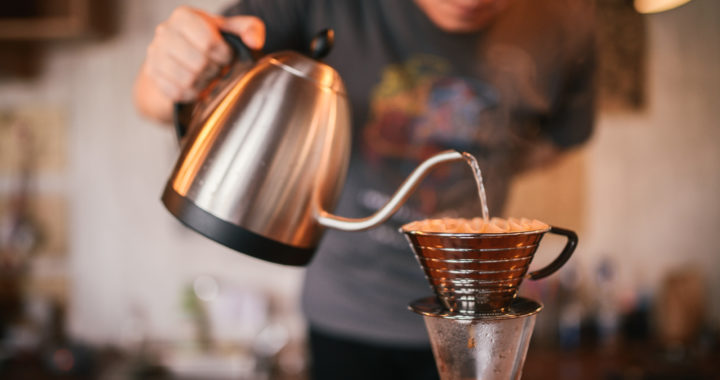To know more about the Coffee Shops Industry in China, contact us at dx@daxueconsulting.com
 The word coffee (咖啡) comes from “Kahve” meaning power and passion – the key drivers of coffee culture in China and around the world. Coffee consumption is a hot trend worldwide and is becoming an essential for many consumers. Countries such as Japan and Korea have an average yearly consumption of 300 cups of coffee per capita, the worldwide consumption of coffee is around 240 cups per capita per year. However, China’s average coffee consumption in urban areas is only at five cups per capita per year, even in tier-one cities such as Beijing (北京) and Shanghai (上海), the per capita consumption is twenty cups per year. This is twelve times less than the world’s average consumption but yet China’s coffee consumption is increasing around 20 % yearly and is becoming the world’s largest coffee consumption country. The coffee market in China is still in its infant stage but with the current coffee sales around CNY 70 billion and the potential market size expected to be around CNY 930 billion, China still have huge capacity in the coffee industry.
The word coffee (咖啡) comes from “Kahve” meaning power and passion – the key drivers of coffee culture in China and around the world. Coffee consumption is a hot trend worldwide and is becoming an essential for many consumers. Countries such as Japan and Korea have an average yearly consumption of 300 cups of coffee per capita, the worldwide consumption of coffee is around 240 cups per capita per year. However, China’s average coffee consumption in urban areas is only at five cups per capita per year, even in tier-one cities such as Beijing (北京) and Shanghai (上海), the per capita consumption is twenty cups per year. This is twelve times less than the world’s average consumption but yet China’s coffee consumption is increasing around 20 % yearly and is becoming the world’s largest coffee consumption country. The coffee market in China is still in its infant stage but with the current coffee sales around CNY 70 billion and the potential market size expected to be around CNY 930 billion, China still have huge capacity in the coffee industry.
In the mind of many Chinese people, coffee is not just coffee. Unlike Western people where the coffee from a store is just an on-the-go energy drink, in the mind of many Chinese consumers coffee is more than that. Many coffee shops are a place of leisure, to socialize or have casual business talks. Many of them are not purely targeting the coffee in the shop, they are targeting the atmosphere that the coffee shop brings them. Thus, chain coffee stores should target more than selling drinks and more in the perspective of a retailer.
Fast consumption success story of Coffee Shops Industry in China – Starbucks
American coffee chains such as Starbucks (星巴克) are appearing in varies malls and commercial buildings all around China. One of the reasons for this success all over the world is celebrity effect (明星效应). Street snaps (街拍) from Westerns celebrities David Beckham (大卫 贝克汉姆), Anne Hathaway (安妮 海瑟薇) to Chinese celebrities Zhao Wei (赵薇) and Yao Cheng (姚晨) favoring an accessory in hand – a Starbuck cup. It is the best decoration item, making them look more leisure and also signaling a sign of good fashion sense. For sure, in the coffee industry, only Starbuck manages to completely mix itself with the fashion world.
Complimentary products are also a key aspect in Starbucks. To better adapt to different cultures, Starbucks has offered many side products that target the culture specifically such as mooncakes (月饼) in Mid-Autumn Festival (中秋节) or sticky rice dumpling (粽子) in Dragon Boat Festival (端午节). Ignoring the profitability of these products, it is a sign for showing the understanding and appreciation of Chinese culture. Other complimentary products such as cups and mugs also adapt to seasons and holidays with cups with Christmas decoration or with Chinese New Year themes.
Korean Style Cafes presents a new trend in the Chinese market
The popularity and power of Korean drama series in China cannot be underestimated. One of the brands that successfully caught the eye of many Chinese is Caffebene (咖啡陪你). With the “Korean Fever” (韩流) sweeping all over China, Chinese are following this trend. Among them, coffee is one of the most affordable products that consumers can easily follow. The chandelier, the classic clock on the wall, the wooden tables, the white coffee mugs and the identical maroon uniform, all the familiar decorations in dramas are identically copied and pasted into stores, giving customers a feeling of the typical Korean drama atmosphere. Celebrity marketing and social network involvement are the key reason for the successfulness of Caffebene in Korea and China. These cafes are often more spacious than common chain coffee shops such as Starbuck and Costa. They often present themselves with a loft structure along with large ceiling windows to attract customers while they walk pass.
Consumer-oriented strategies are one of the main reasons for chain coffee stores in China. With this huge market gap to fulfill, specifically targeting these aspects are what it takes to attract more customers. Unlike Western consumers, Chinese consumers pursue coffee in relation to its side products and the environment it brings.
Daxue Consulting has recently helped a client, an American coffee shop, to enter the Chinese market with new coffee beans brewing. Through an overall analysis of operation and acquisition cost and a competitors bench market, Daxue Consulting identified a new target market for the specific coffee beans and assisted the client in establishing a successful coffee shop in China.




